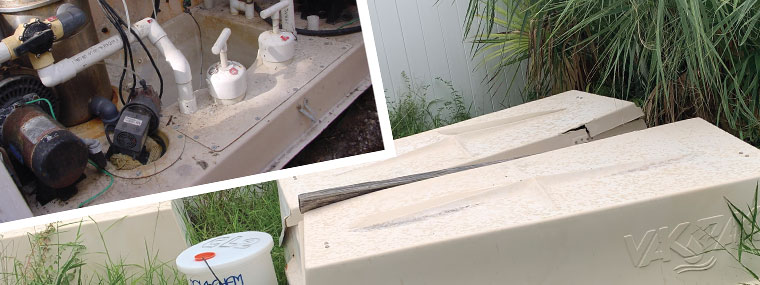
Facility Pool Makeover
From High Maintenance To High Praise
By Alvaro Mendoza / Published February 2021

Many association managers and maintenance staff are faced with a difficult situation with their swimming pool operation these days.
First, they’ve probably inherited a pool/spa mechanical system that might have been built many years ago, with a design commonly based on budget instead of operability and with an eye for economy rather than technology. Second, the systems might have been designed and built during an era when everyone had more time, maintenance staffing was much easier to contract, or the commercial pool service provided exactly what the condominium needed, so it was OK to have a more labor-intensive design.
The world has changed quite a bit since then. Labor and energy costs have risen dramatically, the availability of skilled pool labor has noticeably decreased, the Florida Department of Health (DOH) codes have become a bit stricter, and new national codes (Model Aquatic Health Code–MAHC) have emerged. Liability issues including pathogens (Legionella), parasites (Cryptosporidium), and chemical exposure and accident-related lawsuits have increased dramatically. In general, society has become increasingly more complicated and litigious, and the manager is more often than not stuck trying to navigate this mess with a 1970s pool system that might be falling apart.
But there is hope. It may be quicker, simpler, and less costly than many might have imagined. Many hundreds of managers are finding a winning formula that turns a bad situation into a modern, simple-to-operate, high-tech, code-compliant package that uses a fraction of the energy, water, chemicals, and labor to keep the water crystal clear, the patrons ecstatic, and the lawyers at bay.
[adrotate banner=”5″]
One great example of a cost-effective conversion to 2020 technology took place at the Regatta Condominium in Naples. General manager Andre Laz and his team were spending way too much time and money on their 50,000-gallon pool with waterfalls, 750-gallon spa, and 3,000-gallon kiddie pool. Like many facilities built in the 1990s, the equipment had originally been housed in waist-high outdoor fiberglass packs that were 20 years old and due for an upgrade.
The Problem
The packs had become increasingly difficult to service due to the labor-intensive original filter design, the pack configurations, and space constraints. The vacuum DE (diatomaceous earth) pool filters, located on the suction side of the pump, had to be constantly monitored for soiling as they would choke, cavitate, and potentially damage the pumps if they were to get dirty. They had to be cleaned often. The cleaning was laborious and involved hand-to-hand combat for several hours with draining, soaking, degreasing (to remove suntan lotions and body oils), hosing clean, and recoating the 20 subterranean grids with fresh powdered DE, not to mention emptying the two DE separator tanks and discarding the spent DE powder (Group 3 carcinogen per OSHA) in accordance with environmental codes. The cartridge filters for the spa and kiddie pool were a little bit less time consuming, but cartridges need to be meticulously hosed off and often degreased to remove suntan and body oils.

How about the chemical treatment? The bleach and acid chemical feeders had been serviceable but had to be regulated manually and only provided chlorine and pH balance, requiring the staff to closely monitor the rest of the important water balance variables. It is a known fact that city water supplies lack important minerals for optimum water balance, so one must manually replenish sizable amounts of vital chemicals to raise calcium hardness and total alkalinity to achieve proper water balance so that water is neither corrosive (damaging pool surfaces and heaters) nor scaling (leaving deposits on heaters, tile, pool surfaces, etc.).
The single speed self-priming pump operated at maximum output 24/7/365, and the noise sometimes tested the patience of the nearby residents. With the 2021 Pump Energy Standard looming, the writing was on the wall to include upgraded controls and energy efficiency in the overall solution for the property.
The Solution
Chad Jackson from Jackson Pools in Naples worked in conjunction with CES to design a cost-effective solution that would address the issues described above. The game plan was set and approved by Andre’s team, and Jackson processed the approvals through the local DOH, using plans finalized by a local aquatic engineer. Note: DOH approval is REQUIRED on ALL non-equivalent changes to pool equipment and for any modification to pumping, filtration, or treatment that differs from the original permitted set of plans.
Anatomy of a Successful Pool Makeover
The fiberglass filter packs were removed and discarded, leaving only the subterranean surge tanks, which are required by DOH code to prevent entrapment. The electric service was cleaned up and placed on outdoor racks, where they could be easily serviced.

The labor-intensive pool filters were replaced by three CES Advanced Media Filtration (AMF) filters with single lever backwash capabilities. The filter media selected was AFM® Activated Filter Media made from 99 percent brown and green recycled glass, which had been given a permanent activation charge to prevent media fouling and assist with micro filtration for impeccable water clarity. In comparison to the laborious manual DE filter cleaning, which normally took several hours, the new filter system uses a 1.5-minute backwash cleanse for each tank, normally every week or two, and is activated by turning a lever to the backwash mode, then back to the filter mode. In contrast to the original filter, the activated glass media is permanent and designed to never foul or lose its highly angular structure or activation charge, so there is no short or long-term media replacement or disposal required.
The manual chemistry supervision was replaced by a fully automatic precision control chemistry monitoring and control system equipped with remote control and communications. The system takes direct control of major chemistry parameters and alerts Andre and his team of any variation to desired parameters that could cause an issue, well before it becomes an issue. The system digitally logs the readings in six-second increments for proof of code compliance and enhanced liability avoidance. The alert notification system sends either text or email alerts to maintenance staff, support companies, and the management team, escalating the alerts until the issue is resolved. So, needless to say, there have been very few out-of-range conditions since implementation and baby-sitting of pool chemistry is no longer required.
The manual control over water balance is no longer required, either. The liquid chlorine bleach system was replaced by an all-in-one tablet that provides all of the chlorine, calcium, and alkalinity requirements, along with some stain prevention solution, and uses 1/10th the acid of typical bleach pools. The staff merely fills the tablet feeder periodically, and the system provides optimum water balance 24/7/365 without the addition of any supplemental powdered chemicals. The system is compact and simple to operate and requires very little supervision. Since acid consumption was significantly reduced, the system was converted to UDA™—Ultra-Dilute Acid, which does not fume and is much safer to handle.

The pumping system was tweaked as well. The single speed pumps were replaced by modern and much quieter TEFC pumps operated by PFDx Precision Flow Devices, with a Nema4x VFD. The PFDx systems utilize a highly accurate digital flowmeter which monitors and displays the flow and automatically maintains precise DOH requirements around the clock. When the filters are clean, the systems commonly operate down to 15 percent of normal power requirements, providing significant electrical savings and demand surcharge reductions from the power company. This is all done automatically and without any operator supervision. The system also brought Regatta into compliance with the impending 2021 Pump Energy Standard.
Sounds Expensive?
It wasn’t. The modernization, including Jackson Pool’s expert installation, was surprisingly affordable and was considered self-funding, as the savings in labor, water, energy, and maintenance were considerably more than the monthly costs if the conversion had been leased or financed.
Aside from the obvious financial benefits, the staff and patrons have raved about the water quality. Having a drinking water-grade pool sounds great, but looks even greater, and the consistency of always having 24/7/365 perfect water chemistry (chlorine and pH), DOH-required water flow, and water balance (all parameters) automatically keeps it that way.
Finally, the peace of mind of having continual digital documentation of perfect water quality and DOH compliance helps everyone sleep better at night. Andre’s team sleeps even better knowing that they can accomplish all the above in only a few minutes a day with a minimum budget, and that their system will keep performing this way, with minimal maintenance, for many years to come.
Alvaro Mendoza
President, Commercial Energy Specialists (CES)
Alvaro Mendoza is President of Commercial Energy Specialists (CES). CES helps you take total control of your pool operation for affordable crystal-clear water with guaranteed results. Programs are custom tailored to each site and to each water treatment application. The programs consist of a combination of chemical treatment and filtration hardware, software, training, service, supplies, remote monitoring, alert notification, and on-going support. Every program includes 24 hrs. per day direct automatic control of water chemistry, and the establishment of a comprehensive CES water quality treatment program on your site. For more information, call (561) 744-1557 or visit www.ceswaterquality.com.





